Embroidery at Traquair House
During the few days before my crewelwork courses began with Tracy A Franklin, we did some sightseeing. Driving through the Scottish Borders in autumn is really enough of a treat all alone, so seeing some of the sites made for a few extra-special days!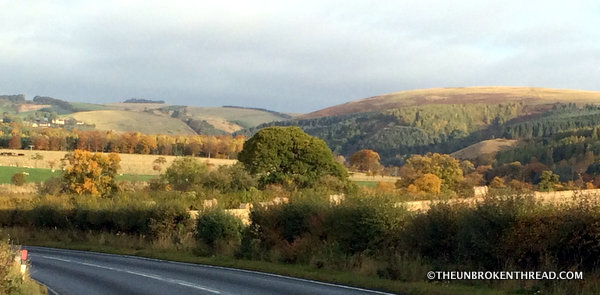 We drove from our holiday house near Kelso to Bo'ness, on the Forth, which isabout an hour and a half drive through more stunning countryside.
We drove from our holiday house near Kelso to Bo'ness, on the Forth, which isabout an hour and a half drive through more stunning countryside.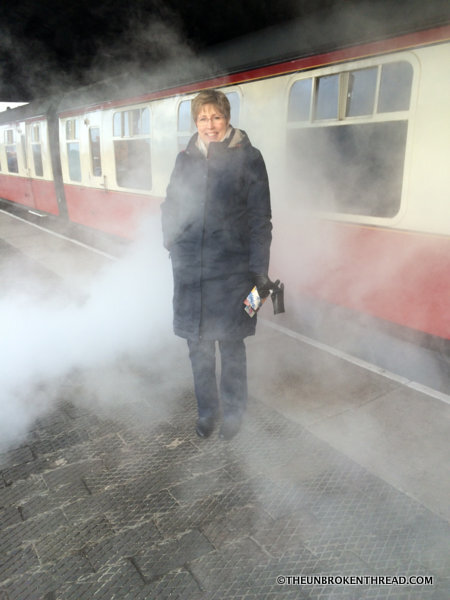 We went to Bo'ness to see the steam trains at the Bo'ness and Kenneil Preserved Railway in the morning and ride on one of the trains running that day for rail enthusiasts.
We went to Bo'ness to see the steam trains at the Bo'ness and Kenneil Preserved Railway in the morning and ride on one of the trains running that day for rail enthusiasts.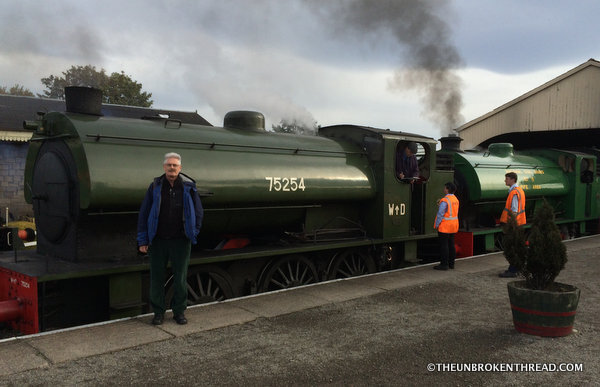 After spending a delightful - if slightly sooty! - three hours there, we got back into the car and drove south to Traquair House. Traquair House dates back to 1107 and was originally a hunting lodge to the kings and queens of Scotland.
After spending a delightful - if slightly sooty! - three hours there, we got back into the car and drove south to Traquair House. Traquair House dates back to 1107 and was originally a hunting lodge to the kings and queens of Scotland.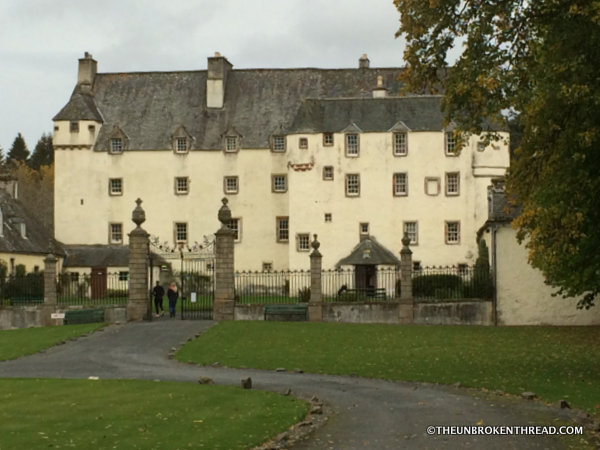 It's most famous visitor was Mary, Queen of Scots, who visited with her second husband, Lord Darnley and her infant son James VI of Scotland/James I of England in 1566.
It's most famous visitor was Mary, Queen of Scots, who visited with her second husband, Lord Darnley and her infant son James VI of Scotland/James I of England in 1566.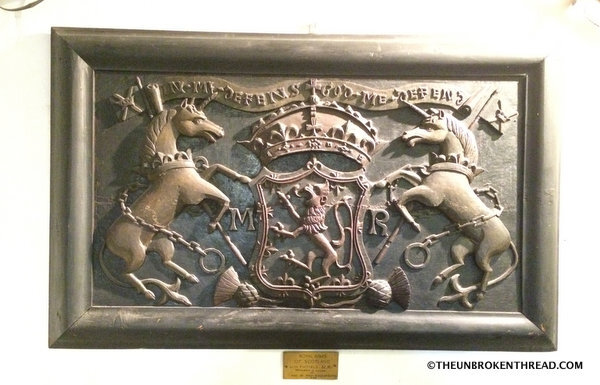 The wooden plaque, above, was presented to the Laird of Traquair by Mary, Queen of Scots, at the end of her visit to Traquair.I just love the thistles at the bottom of the plaque and the unicorns rearing up on either side!
The wooden plaque, above, was presented to the Laird of Traquair by Mary, Queen of Scots, at the end of her visit to Traquair.I just love the thistles at the bottom of the plaque and the unicorns rearing up on either side!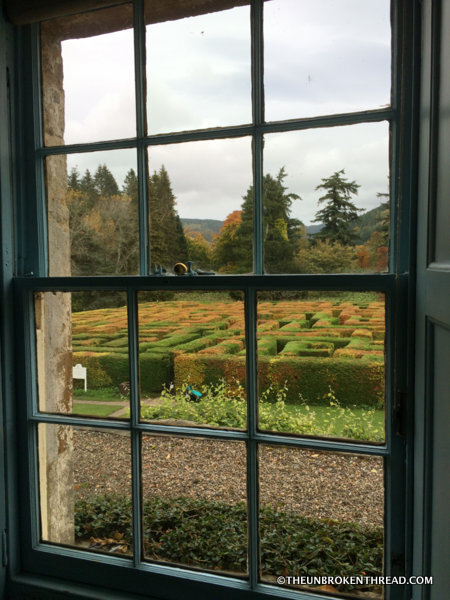 Outside the house there's a maze that was planted in 1981 and is one of the largest mazes in Scotland, covering over half an acre and it is 1/4 mile to reach the centre. In the autumn the foliage changes color as the maze is all beech trees. Pretty, isn't it?
Outside the house there's a maze that was planted in 1981 and is one of the largest mazes in Scotland, covering over half an acre and it is 1/4 mile to reach the centre. In the autumn the foliage changes color as the maze is all beech trees. Pretty, isn't it?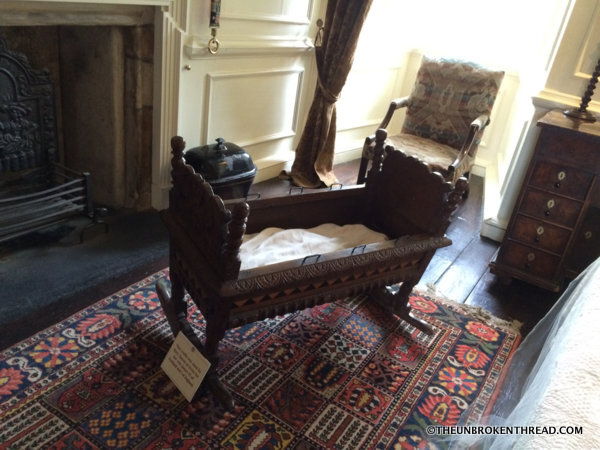 Above is a photo of the cradle of James VI/I slept in when he was at Traquair. Seeing it was very emotional. I could imagine his nurse - and maybe even his mother - rocking him to sleep at a time when their future still looked happy.On the top floor of the house is the display of petit embroidery that dates from the 1600s.
Above is a photo of the cradle of James VI/I slept in when he was at Traquair. Seeing it was very emotional. I could imagine his nurse - and maybe even his mother - rocking him to sleep at a time when their future still looked happy.On the top floor of the house is the display of petit embroidery that dates from the 1600s.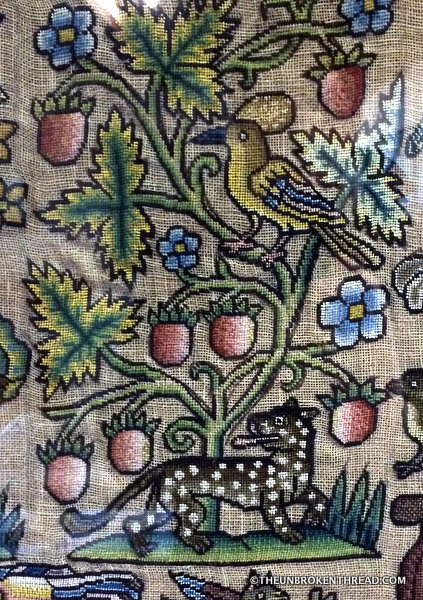 These are worked as slips - small pieces of embroidery that were intended to be cut out and sewn onto a piece of fabric that would be used for a bed hanging, for example.
These are worked as slips - small pieces of embroidery that were intended to be cut out and sewn onto a piece of fabric that would be used for a bed hanging, for example.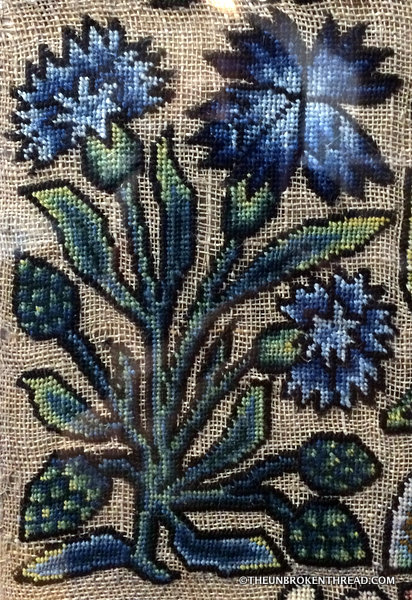 The designs are very angular and beautifully worked in silk on fine linen.
The designs are very angular and beautifully worked in silk on fine linen.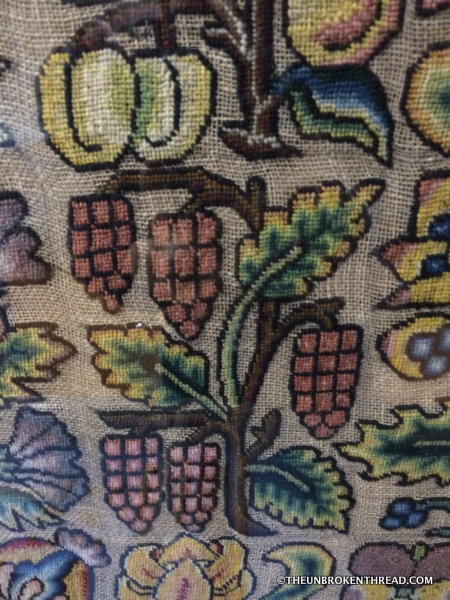 The mystery (for me anyway...) is why were they never used as they were intended? Someone put in hours and hours of work stitching these (there are at least 30 separate designs like the three pictured here worked on multiple pieces of fabric) and then they are put away and never used.
The mystery (for me anyway...) is why were they never used as they were intended? Someone put in hours and hours of work stitching these (there are at least 30 separate designs like the three pictured here worked on multiple pieces of fabric) and then they are put away and never used.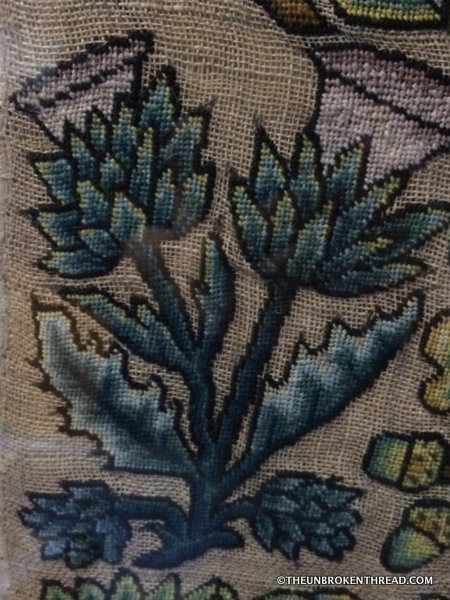 Did they go out of fashion? Did the embroiderer die and no one in the family liked them enough to use them after her death? Were they stitched as extras and then not needed?
Did they go out of fashion? Did the embroiderer die and no one in the family liked them enough to use them after her death? Were they stitched as extras and then not needed?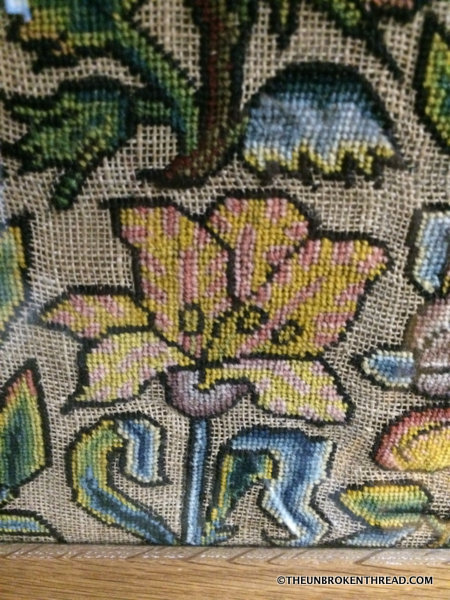 No matter the reason, we are lucky they weren't used, were packed away carefully, out of the light and dust, for us to enjoy them today.Traquair House is open to the public for most of the year. For information about opening times and events, check their web site.Tomorrow my first day of class with Tracy A Franklin at Burnbrae Studio!
No matter the reason, we are lucky they weren't used, were packed away carefully, out of the light and dust, for us to enjoy them today.Traquair House is open to the public for most of the year. For information about opening times and events, check their web site.Tomorrow my first day of class with Tracy A Franklin at Burnbrae Studio!
